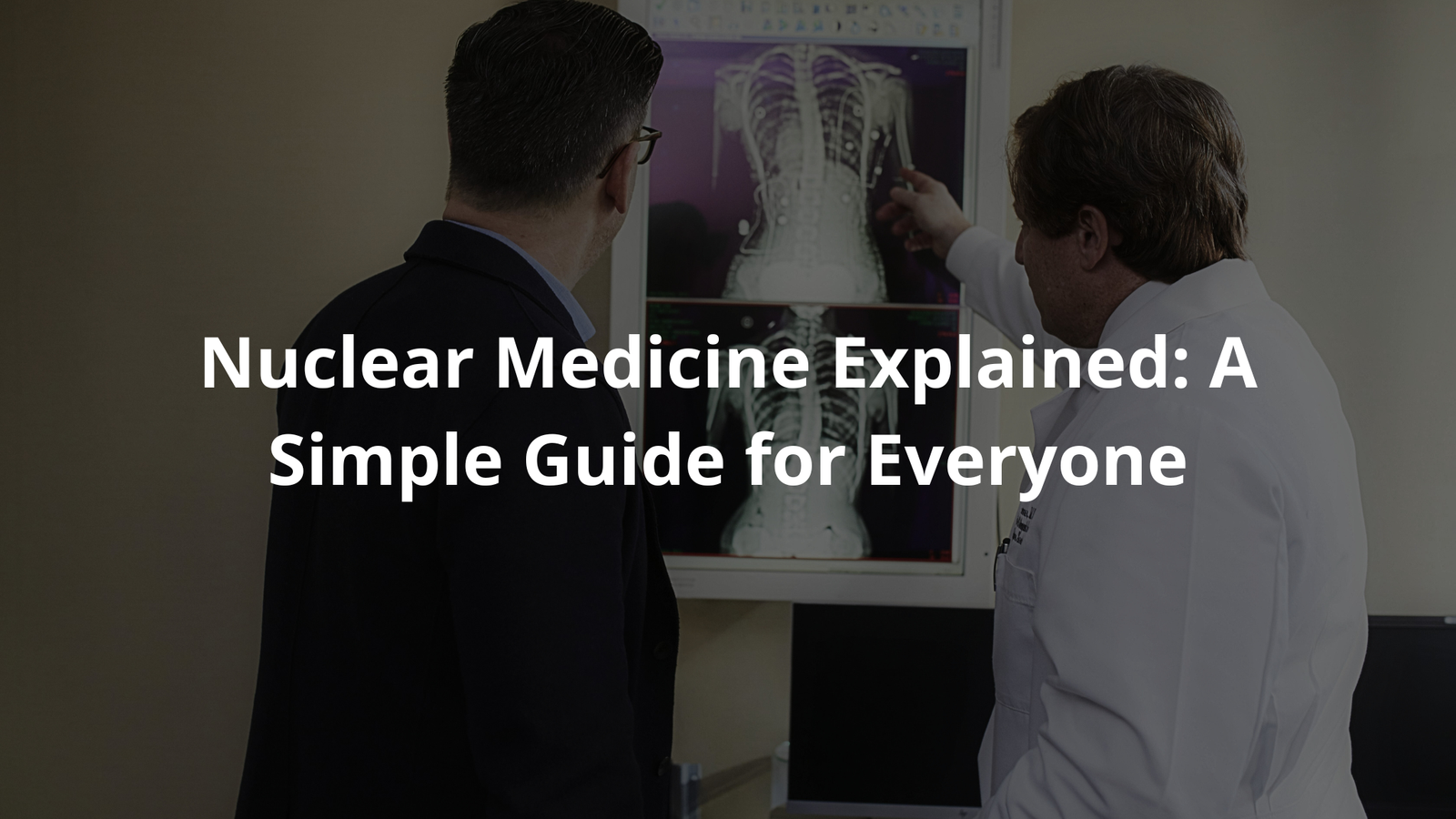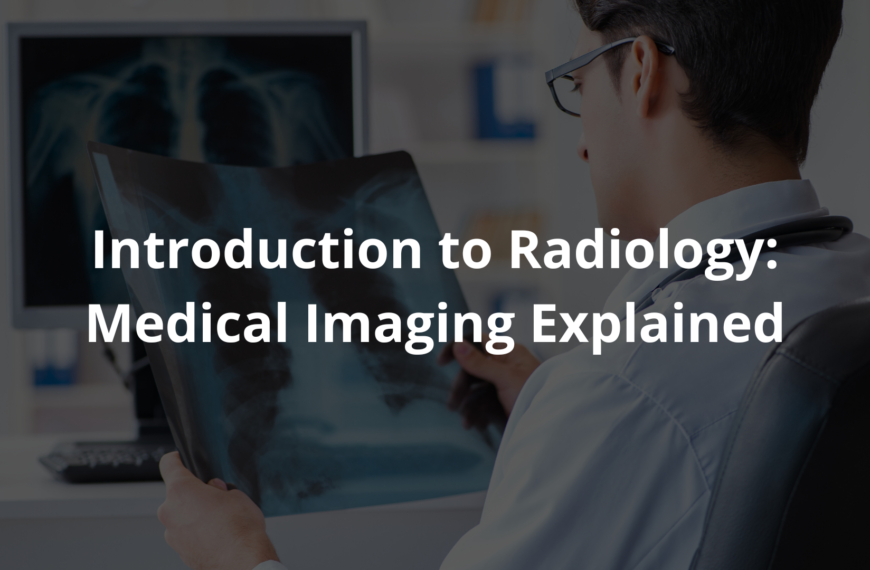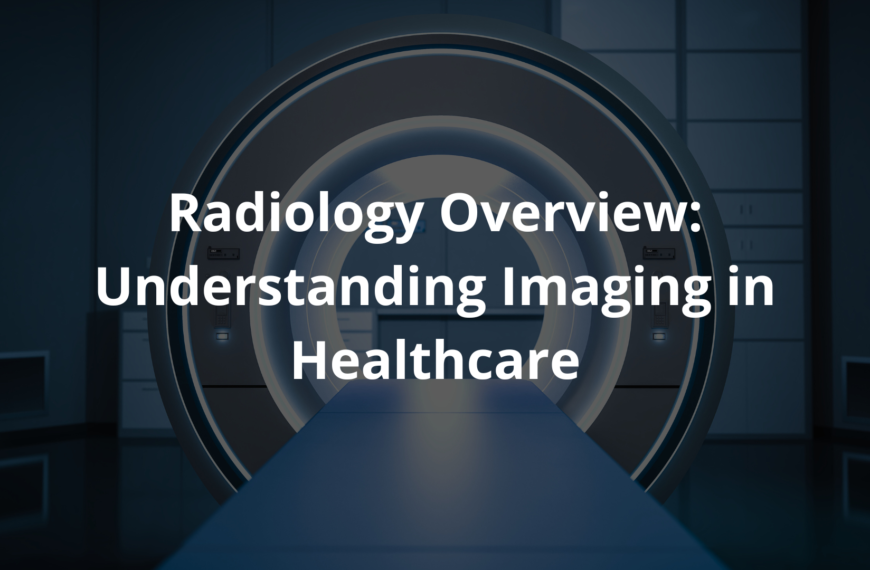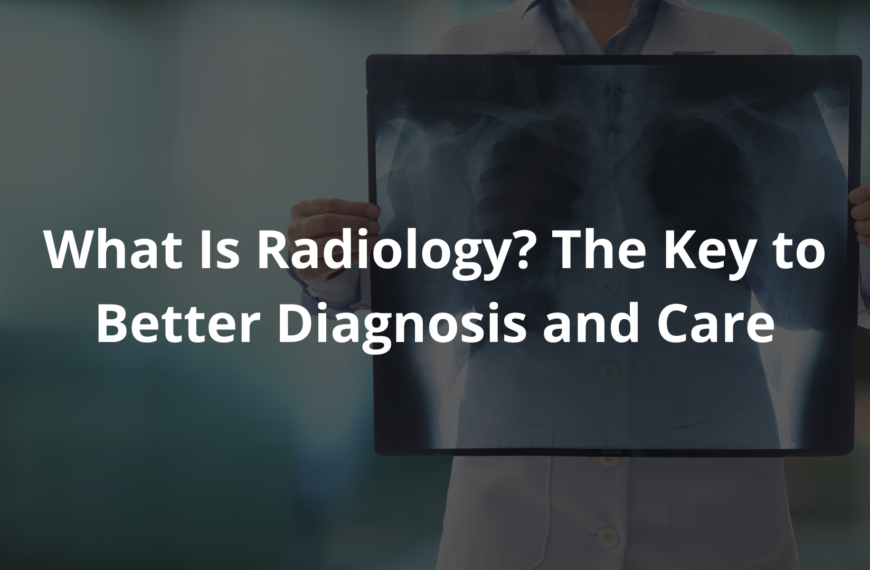Learn about nuclear medicine, how it works, and its uses in diagnosing and treating diseases.
Nuclear medicine is a fascinating field that uses tiny bits of radioactive material to help doctors see inside our bodies. Imagine a superhero who can look through walls! That’s what nuclear medicine does, but with our organs and tissues. It helps doctors figure out what’s wrong and how to fix it. If you want to know how nuclear medicine works and why it matters, keep reading!
Key Takeaway
- Nuclear medicine helps doctors see how well our organs work.
- It uses small amounts of radioactive material to get pictures.
- Doctors can treat diseases like cancer with nuclear medicine too.
What is Nuclear Medicine?
The world of nuclear medicine is like a hidden treasure chest, waiting to be opened. It’s an exciting field that uses tiny bits of radioactive substances to help doctors understand what’s happening inside our bodies. Imagine being able to see the inner workings of your heart or lungs! These substances are called radiopharmaceuticals(1).
They work by giving off radiation, which is energy that comes from the atoms. This energy helps doctors get a clearer picture of how different organs are functioning.
When a patient goes for a test, like a PET scan or a CT scan, it’s like embarking on a mini-adventure. The doctor will give you a small dose of a radioactive tracer. This tracer is a special kind of medicine that goes to specific organs, like the heart or the thyroid gland. After it travels through the body, it sends back signals.
These signals are like messages that tell the doctor what’s going on. It’s fascinating how something so small can provide such important information.
This is how it works: the doctor uses special cameras, such as a gamma camera, to take pictures of the emitted radiation. These pictures are incredibly detailed and can help doctors spot any sick areas, like cancer cells that are hiding. It’s like finding a needle in a haystack, but with the help of technology, the needle becomes easier to find.
Doctors use these images to diagnose health problems effectively. They can look for issues like bone pain or even check for diseases like thyroid cancer. It’s amazing how this technology can help in the early detection of diseases. Early detection often leads to more successful treatments. The use of nuclear medicine is like having a superhero on your side, ready to swoop in and help keep your health in check.
In some cases, patients might feel a bit anxious about the radiation involved. It’s natural to worry about radiation exposure. However, the amount of radiation used in these tests is typically very low. For example, a single test might expose you to a radiation dose similar to what you receive from natural sources in a few days. It’s crucial to remember that the benefits of these tests often outweigh the risks.
So, if someone needs a nuclear medicine test, they should know it’s a safe way to gather important information about their health. The next time you hear about nuclear medicine, think of it as a powerful tool that helps doctors see what’s happening inside our bodies, shining a light on areas that need attention. It’s truly a remarkable part of modern healthcare.
How Does Nuclear Medicine Help?
Nuclear medicine helps doctors in many ways. Here are a few important uses:
- Finding Problems: It helps find out if organs are working properly or if there’s something wrong. For example, if you have bone pain, a bone scan can show if there are any issues in your bones.
- Treating Diseases: Some radioactive materials can even treat diseases. For example, if someone has thyroid cancer, they can use radioactive iodine to help kill the cancer cells while leaving healthy tissue alone.
- Understanding Blood Flow: Doctors can see how blood flows in your body. This is important for heart disease. They can look at how well blood reaches different parts of your heart.
Safety in Nuclear Medicine
When people think about nuclear medicine, they often worry about safety. It’s a natural reaction, especially since the word “radioactive” can sound scary. But here’s the good news: safety is a top priority in this field. The amount of radiation used during tests is usually quite low.
It’s comparable to what you might receive from other imaging tests, such as CT scans. For example, the radiation dose from a nuclear medicine test can range from about 0.3 to 20 mSv (millisieverts). This is generally considered safe for most individuals.
Doctors and hospitals follow strict regulations to keep everyone safe. They have guidelines that protect both patients and staff from unnecessary exposure. After a test, most of the radioactive material clears from your body within a few days. It’s like cleaning up after a fun party; everything returns to normal pretty quickly.
Here are some key safety practices in nuclear medicine:
- Low Radiation Dose: Tests typically use small amounts of radiation, making them safe for most people.
- Protective Measures: Hospitals have strict protocols to ensure safety for patients and medical staff.
- Quick Elimination: Most radioactive materials leave the body within a few days.
For anyone feeling anxious about a nuclear medicine test, it’s important to know that the benefits usually outweigh the risks. With a little knowledge and understanding, patients can feel more at ease. After all, these tests help doctors find problems and keep people healthy. So, if you ever find yourself needing a nuclear medicine procedure, remember that safety is built right into the process.
The Equipment Used in Nuclear Medicine
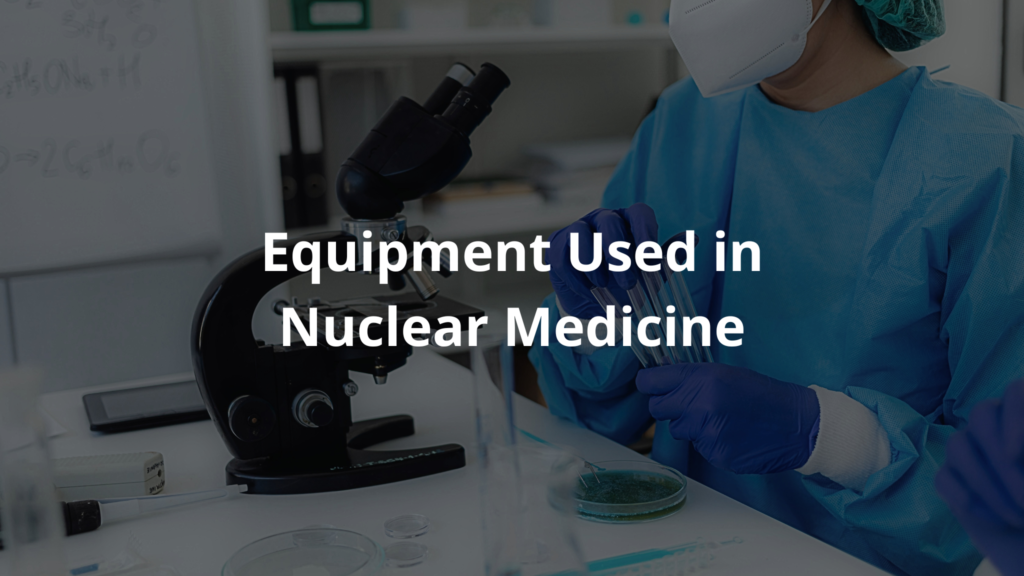
To see what’s going on inside the body, doctors use special machines. Here are some of the most common ones:
- PET Scan: This stands for Positron Emission Tomography. It shows how organs are working and can find cancer early.
- SPECT Scan: This is Single Photon Emission Computed Tomography. It helps get detailed pictures of blood flow and organ function.
- Gamma Camera: This camera detects the gamma rays that come from the radioactive tracers in your body. It helps create images for doctors to examine.
These machines are very important tools for doctors. They help them understand what’s happening inside your body without needing to do surgery.
The Role of Nuclear Medicine in Australia
Australia’s commitment to nuclear medicine is impressive. There’s a buzz of activity around organisations like the Australian Nuclear Science and Technology Organisation (ANSTO). They play a crucial role in ensuring that medical professionals have enough isotopes for their tests. In fact, ANSTO produces around 75-80% of the isotopes used throughout the country.
That’s a lot! It means that about 700,000 nuclear medicine procedures occur every year because of the work they do. This large number shows just how important nuclear medicine is in helping people stay healthy(2).
Doctors who wish to specialise in this field undergo rigorous training. They dive deep into the world of radiopharmaceuticals and learn how to use them safely. This training isn’t just about passing exams; it’s about gaining practical experience and understanding how to diagnose and treat various diseases.
Here are some key aspects of training in nuclear medicine:
- Radiopharmaceutical Safety: Understanding how to handle radioactive materials is crucial.
- Diagnostic Techniques: Learning how to interpret images from PET and SPECT scans helps doctors.
- Patient Care: Training emphasises the importance of patient safety and communication.
In Australia, the education and preparation of these doctors are vital in ensuring effective healthcare. The knowledge gained not only helps them treat diseases but also builds trust with patients. When someone walks into a clinic, they can feel confident knowing that their doctor has been well-trained.
So, if someone needs a nuclear medicine procedure, they can rest assured that there’s a strong support system in place. With organisations like ANSTO and dedicated medical professionals, nuclear medicine in Australia continues to thrive, making it a powerful ally in the fight for better health.
Personal Stories with Nuclear Medicine
There’s a story about a friend named Sam that really shows the impact of nuclear medicine. Sam was always the life of the party, full of energy and laughter. But one day, he started feeling tired all the time. It wasn’t like him at all. He would wake up in the morning and feel as if he hadn’t slept at all. After trying to brush it off, he decided it was time to see the doctor.
The doctor suggested a thyroid scan using radioactive iodine to see if something was wrong. Sam felt a wave of nerves wash over him; he had never had a test like that before. What would it be like? Would it hurt? But he knew it was important to find out what was causing his fatigue.
The test involved a small dose of radioactive iodine, which would help the doctors see how his thyroid was functioning.
After the scan, the doctor took a close look at the images. It turned out Sam’s thyroid wasn’t working properly. Thanks to the scan, the doctor was able to figure out the right treatment. Sam started feeling better after he got on medication. Now, he’s back to his usual self, full of energy and ready to tackle any challenge that comes his way—just like before.
Sam’s experience shows how nuclear medicine can make a big difference in someone’s life. It’s not just about taking pictures; it’s about finding solutions to health problems. These tests help doctors understand issues that patients might not even know they have.
So, if someone ever needs a nuclear medicine procedure, they can rest assured that it could lead to the answers they need for a healthier life. You never know how a simple test can change everything for the better.
Conclusion
To wrap up, nuclear medicine is a special field of medicine that uses small amounts of radioactive materials to help doctors diagnose and treat diseases. It plays a big role in healthcare, especially in Australia, where there are strict safety rules and lots of training for doctors.
Whether it’s through a PET scan, SPECT scan, or a thyroid scan, nuclear medicine helps us understand what’s happening inside our bodies. So, if you ever need a nuclear medicine test, remember that it’s there to help you!
FAQ
What is nuclear medicine imaging and how does it differ from common imaging tests like CT scans or MRI?
Nuclear medicine imaging uses small amounts of radioactive tracers to examine organ function, unlike CT scans or MRI which mainly show anatomy. This medical speciality helps diagnose and treat various medical conditions by tracking how your body processes these tracers.
How do nuclear medicine scans work with radioactive tracers and gamma camera detection?
During nuclear medicine scans, you receive an intravenous injection of a radiotracer in your body. The gamma camera detects radiation emitted from these tracers, creating three-dimensional images of specific organs. The imaging procedures show both structure and function of organs.
What types of nuclear medicine tests are used for heart disease and coronary artery disease?
Myocardial perfusion imaging helps evaluate blood flow to the heart. These diagnostic procedures track blood flow patterns using radioactive tracers. The imaging studies can reveal areas of reduced blood flow, helping healthcare providers assess heart function.
How do PET scans and body PET scans help detect cancer cells?
PET scans use positron emission tomography to create detailed images that can identify cancer cells and soft tissue abnormalities. These nuclear imaging techniques help determine if cancer has spread and monitor treatment effectiveness.
What role does nuclear medicine play in thyroid function tests and thyroid cancer treatment?
Nuclear medicine helps evaluate thyroid gland function and treat thyroid cancer through radioactive iodine therapy. The thyroid scan uses small amounts of radioactive material to assess thyroid function, while radionuclide therapy targets thyroid cancer cells.
What are common applications of bone scans and how do they help diagnose bone pain?
Bone scans can detect bone marrow problems and evaluate bone pain by showing blood flow and cell activity in bones. These diagnostic nuclear medicine procedures help identify issues like cancer spread to bones or infection.
How safe are nuclear medicine procedures regarding radiation exposure and radiation safety?
Nuclear medicine procedures use carefully controlled radiation doses and ionising radiation. The amount of radiopharmaceutical used follows strict radiation protection guidelines. The short half-life of medical isotopes means radiation exposure is limited to a short time.
References
- https://www.racp.edu.au/trainees/advanced-training/nuclear-medicine
- https://www.ansto.gov.au/products/nuclear-medicine

